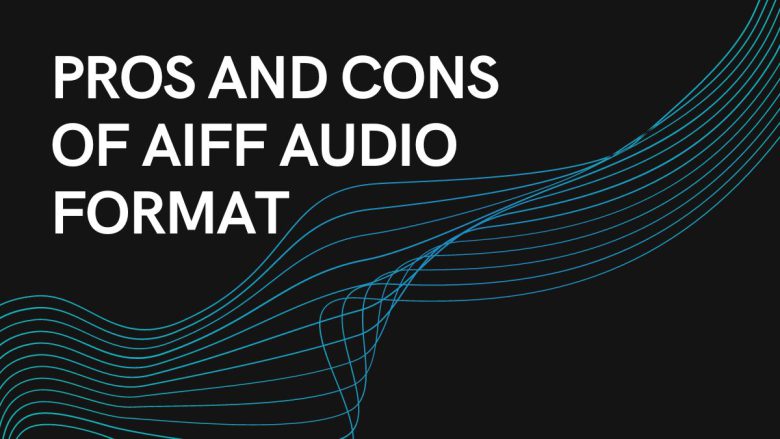
Numerous audio formats compete in digital audio, each with unique strengths and weaknesses. AIFF (Audio Interchange File Format) is a format that often goes unnoticed. We will discuss the pros and cons of AIFF, focusing on its features and benefits for operations.
Understanding AIFF (Audio Interchange File Format)
In the late 1980s, Apple Inc. developed AIFF, a popular uncompressed audio file format. Professional audio products widely utilize it because of its high audio quality and compatibility with Macintosh systems. Moreover, it has become a staple in the industry for its reliability and versatility. Transitioning into its technical aspects, AIFF files maintain their original sound quality, making them ideal for audio editing and production purposes. However, despite its widespread use, AIFF faces competition from other formats such as WAV and FLAC. Nonetheless, with its longstanding presence and Apple’s continued support, AIFF remains a prominent choice for audio professionals seeking top-notch quality and seamless integration with Macintosh platforms.
AIFF primarily earns recognition for its uncompressed format, ensuring the retention of all original audio data without any loss. Furthermore, AIFF offers superior sound quality, making it the preferred choice for recording, editing, and learning audio in professional settings. Moreover, its uncompressed nature allows for maximum fidelity, preserving the nuances of the audio waveform. Additionally, AIFF files are compatible with a wide range of audio editing software and hardware devices, facilitating seamless workflow integration for audio professionals. However, despite its advantages, AIFF files tend to occupy larger storage space compared to compressed audio formats, necessitating ample storage space. Nonetheless, for those prioritizing audio quality and fidelity, AIFF remains an indispensable format in the realm of professional audio production.
AIFF stores audio data in PCM and LPCM formats. This offers flexibility in audio workflows.
Pros of AIFF Audio Format
- Uncompromised Audio Quality: AIFF files preserve the original recording’s dedication, ensuring uncompromised audio quality. They are perfect for critical listening and professional audio tasks.
- Lossless Compression: AIFF doesn’t use lossy compression like MP3 or AAC, ensuring no audio data is discarded.
- Compatibility: AIFF is widely supported by audio software, especially in the Apple ecosystem. It works with most DAWs, audio editors, and media players.
- Metadata Support: AIFF files support metadata like artist name, reader title, and track information. This allows for easy association and operation of audio files.
- Editing Flexibility: AIFF files are uncompressed. This makes them perfect for audio editing tasks such as trimming, fading, and mixing. They can be edited multiple times without any loss of quality.
- Archival Purposes: AIFF is a preferred format for archiving audio due to its preservation of quality. It ensures that the integrity of the recording remains complete over time.
Cons of AIFF Audio Format
- Large File Sizes: AIFF files have larger file sizes compared to MP3 or AAC since they are uncompressed. Using too much hard drive space can hinder online streaming and sharing.
- Limited Metadata Support: AIFF supports limited metadata compared to formats like FLAC or MP3. Druggies may find it grueling to bed expansive metadata within AIFF files.
- Compatibility Outside Apple Ecosystem: AIFF is well-supported in the Apple ecosystem. However, you may face compatibility issues with Windows software. It needs to address this challenge effectively. This can pose challenges for druggies who work in mixed surroundings.
- Not Ideal for Streaming: AIFF files are not ideal for streaming due to their large sizes. They do not fare well for operations where bandwidth matters. Streaming services prefer MP3 or AAC for audio delivery.
- Storage Requirements: Storing a large collection of AIFF files requires significant storage space. Professional audio engineers and musicians have extensive, high-quality audio libraries. This is especially true for them.
Conclusion
AIFF delivers unmatched audio quality for professional audio tasks. It also offers comity. Its uncompressed nature faithfully preserves every detail of the original recording. This makes it a favored choice for recording, editing, and learning audio.
Large file sizes and limited metadata support for AIFF may pose challenges. This is especially true for streaming and sharing. AIFF remains the foundation of the audio industry. Professionals and consumers value its quality.


